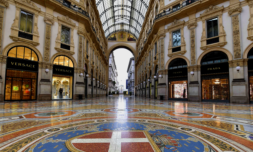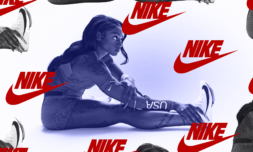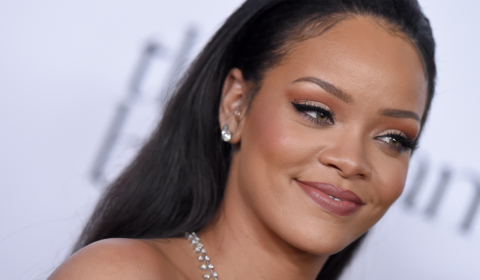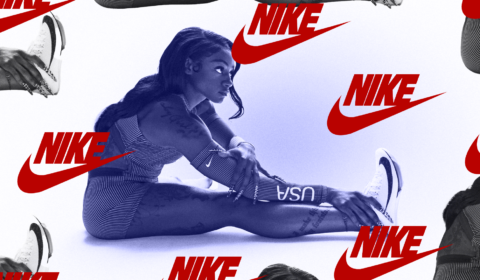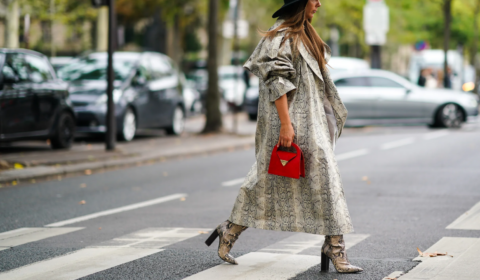While the world spins out of control, fashion designers have begun looking to New Age practices for some much-needed healing.
‘A lot of time we put our faith in material things, but those things won’t heal us,’ evangelised the choir leader at the last of Kanye West’s infamous Sunday Services before the pandemic began. ‘We love Jesus Christ more than an expensive outfit,’ he added.
Over the past decade, New Age practices viewed as — at best — ‘obscure spiritualism’ and — at worst — ‘hippie nonsense,’ (I’m talking astrology, healing crystals, et al) have permeated popular culture. Remember Gwyneth Paltrow’s pricey yonic eggs, touted to ‘increase feminine energy, cleanse, and clear’? Or how about the dopamine fasting wellness trend that went viral for suggesting participants derive themselves of all joy to ‘reboot’ their brains? The list goes on.
What’s especially interesting, is that these forms of mysticism have not been lost on the fashion industry, either. In 2018, luxury house Givenchy jumped on the bandwagon, launching a collection of solid-bronze zodiac-themed earrings that could double-up as amulets.
And, that same season the Olsen twins provided attendees of The Row’s AW18 show with black tourmalines and white quartzes to ‘repel negative energies’ and balance ‘mental, emotional, physical, and spiritual planes.’ For almost half a century, surface-level appropriation of religious imagery, symbolism, and costumes have occasionally sprung up on the runways of Dolce & Gabbana, Dior, Jean Paul Gaultier, and Chanel, each drawn to the visual aesthetics of Christianity, Islam, and Judaism in order to sell clothes. Although these practices have only recently become ‘the norm’ within fashion circles, the convergence of the ‘spiritual’ with luxury fashion has since developed into something so much more.
So, why are designers suddenly so fascinated by this? Given the current situation which has sent the world spinning out of control and, along with it, the traditional fashion cycle, it’s unsurprising that consumers would be looking for a way to make sense of their surroundings. Tapping into this notion and acknowledging that spirituality offers balance, a less frenetic pace, designers are tactically striving to bring the industry (and the world in general) a much-needed dose of good energy whilst capitalising on prevailing social trends.


How, therefore, in today’s increasingly spiritualised world, is fashion poised to become a new vessel that leads the way? With YEEZY Season 8, no less. For some time now, Kanye West’s spiritual awakening has been common knowledge, making its way gradually into all of his designs. What began with a simple guardian angel printed onto a beige tank top has snowballed into a billon-dollar industry with West at the helm. ‘To spread the Holy Spirit,’ he says, explaining how faith has directly impacted his business (though it’s possible that the millions of dollars he’s made through his company also had something to do with it). ‘That’s my job as a Christian.’ But he isn’t the only member of the hip-hop-fashion complex to reference spirituality in his work, with Stormzy, Jaden Smith, and A$AP Rocky just a few of the big names making a vehement habit of proudly announcing what they believe in.
Designers are facing a whole new generation of consumers who, for perhaps for the first time in history, are able to decide for themselves what the existence of a ‘higher power’ might mean to them, and are creating various permutations of spirituality to suit their own experiences. In fact, according to Boston Consulting Group, the Gen Z and millennials who are finding new guidance via spirituality nowadays are, by 2026, set to make up around 61% of the international personal luxury goods market.
Consequently, why wouldn’t the global fashion industry in its quest to appeal to young consumers be keen to introduce new age spirituality into their product and marketing design processes? ‘Many creatives are genuinely interested in things that inspire them,’ says Heather Haber, founder of Advisory Board Crystals. ‘A lot of creatives, and especially a lot of the industry of ‘brands,’ follow trends to get their ideas. So it’s not unusual that some of us would be focused on infusing these ideas and practices into our work.’
A Harlem Gucci x Dapper Dan boutique infused with chakra symbolism. A range of Vetements star sign raincoats and t-shirts. A debut couture collection of zodiac motif-covered gowns for Dior’s SS17 show. These are just a few examples of how brands (big and small) are aiming to harness the growing appetite for the metaphysical, through astrology readings, religious symbolism, crystals, and tarot cards. But this simply brushes the surface when it comes to what the next generation is truly seeking.
What’s a little ironic, perhaps, is that while spirituality is supposed to counterpoint years of hyper-consumerism by being a means of reclaiming a more grounded and meaningful lifestyle, by buying into it as a ‘trend,’ brands are actually personifying it. Yes, they’re reflecting this generation’s changing world, but whether or not they can extend beyond that and achieve duality by making money while supporting new ideas is what’s key.
‘Tackling topics that are closely connected to happiness and giving thought starters is important, especially to a younger audience,’ says creative director of Highsnobiety’s Inner Life capsule collection, Herbert Hofmann. ‘It’s about focusing on your inner life and finding out what matters beyond superficial social media presence and suggested lifestyles that aren’t mentally healthy.’ How, therefore, can brands genuinely mirror these ‘fundamental fulfillments’ realised in higher forces that Hofmann’s referring to?
By understanding what has changed. The subtle wearing away of traditional ‘norms’ that once defined (and frankly, still define) our identity — such as age, religion, nationality, sexual orientation, and gender — plays a predominant role in what consumers are after on their hunt for contemporary modes of guidance, alongside the aforementioned external macro factors that contribute to this rising infatuation with new age spirituality.












